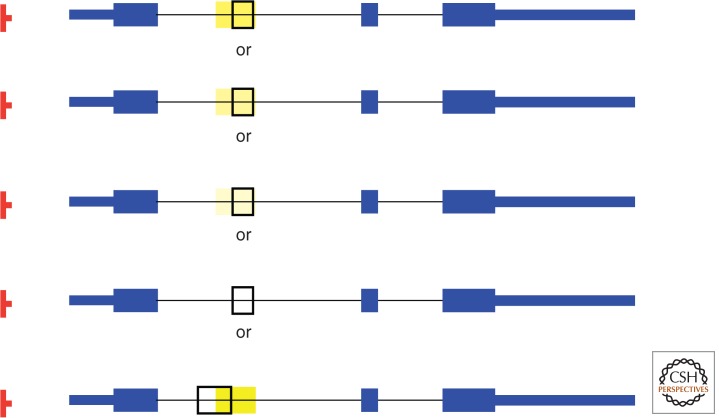Figure 2.
Exaptation of a new gene module at any stage of transposed element (TE) deterioration. In this example, a SINE, such as Alu, B1, identifier (ID), or mammalian-wide interspersed repeat (MIR), is retroposed into the first intron of a gene (introns depicted by thin black lines and the SINE as wide yellow bar). The gene harbors three exons (in blue). Open reading frames (ORFs) are shown as wide bars, whereas the 5′-UTR (untranslated region) and 3′-UTR are shown as narrower blue bars, in the terminal exons, respectively. The transcription promoter is depicted in red. The four top representations indicate the gradual decay of the SINE element by continuous mutation fading from yellow to white; thus, blending into the other anonymous sequence of the intron. At any of those stages, part of the TE can be exapted as novel exon (framed in black). Sometimes part of a discernible TE and adjacent anonymous intron can be exapted as novel gene module (bottom).

